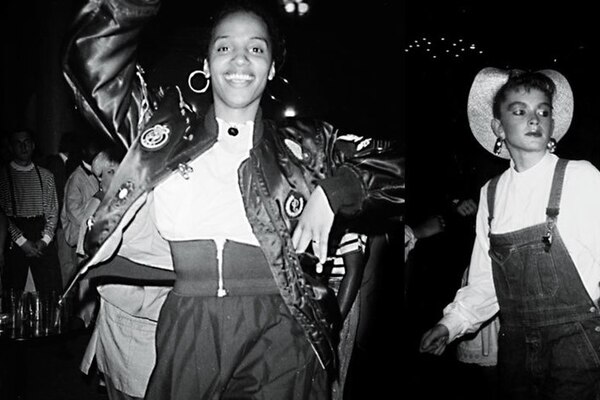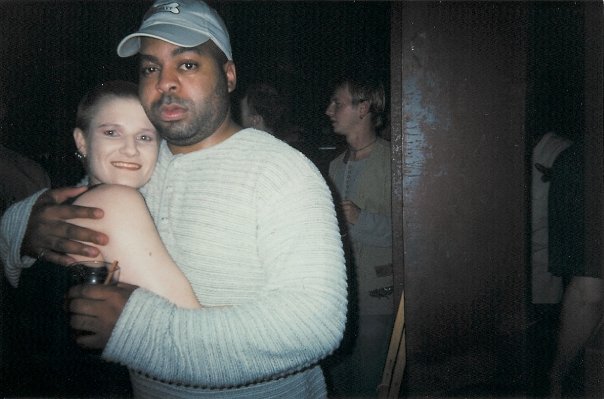Nightclubbing: Jive Turkey

Much ink has been spilled about the creative energy of Sheffield throughout the ’70s and ’80s. The bands featured in the documentary Made in Sheffield reads like a who’s who of avant-garde British pop music – ABC, The Human League, Clock DVA, Cabaret Voltaire, Comstat Angels. The time period has been anthologized again and again, the industrial North of England an iconic, internalized concept. When dance music hit, however, a great deal of that mythologizing turns toward Manchester and Factory Records’ Haçienda, the money pit nightclub buoyed by New Order record sales and Tony Wilson’s charm until Mike Pickering (and ecstasy) came along. Nonetheless, Sheffield had its own dance culture, one anchored by the unlikely union of two complementary DJs that came together to throw a party called Jive Turkey.

“If you were wearing, shall we say, a hat or had an awkward haircut or an unfortunate skin color, you were almost certainly not going to get in to nightclubs in Sheffield by the mid-’80s,” explains Richard Barratt, AKA Parrot, in his typically sardonic manner. “Our premise with Jive Turkey was that anybody could get in and you could do whatever the fuck you wanted. But hopefully once you got in there, even if you weren’t aware of the records we were playing, maybe you’d be... It’s a terrible word, but... Educated into liking them.”
It wasn’t initially a huge success. “For the first six months to a year at Jive Turkey, you’re talking about 100 to 150 people. Luckily, we were in a very small space,” says Parrot. That space was Mona Lisa’s, the converted top floor of a restaurant. It was hardly the nicest space in town, remembers promoter Matt Swift. “Back when it was a restaurant, I think it was the exclusive upstairs area with topless waitresses,” he laughs. “When we went in it had flock wallpaper with topless women with Afros. We got rid of that, but in retrospect it would have been quite cool I suppose.” Parrot has one word for it: “Seedy.”
When Jive Turkey began at Mona Lisa’s, Parrot was the night’s sole DJ. Early on, though, Winston Hazel made his way down to the party. Hazel was originally a dancer. “DJing started as a way for me to play music for my friends so we could dance when we were out,” he admits. “The thing that I noticed about Mona Lisa’s was that people didn’t stand around watching to see who was going to start dancing. Or studying who was wearing what. The dancefloor was busy from the moment that people got in.”
Parrot – playing ’70s rare groove, soul and funk that wasn’t being played anywhere else of note in Sheffield – mixed perfectly with Hazel who started to bring the new sound of electro into the mix as well. The party kicked off at a strange moment in dance music for the country as a whole. “This was at a time when the all-dayer scene in the UK was dying off. That was a very black scene. All about dancing, all about style,” says Hazel. “Jive Turkey became a mecca for what was left in terms of good, mixed, eclectic black music: soul, funk, jazz, disco. You had a lot of disenfranchised black youth that came there because it was the next best thing that was available.”

What made Jive Turkey particularly unique was its racial mix. Parrot is white, Hazel black – and they brought everyone under one roof. The story of a nightclub where different races got together on the dancefloor in the ’80s is, by now, well-trod territory. But it’s hard to overstate how rare it was – especially in the North of England. As Stephen Titmus pointed out in his Nightclubbing piece on London’s Crackers, the previous decade had seen “far right groups such as The National Front on the rise, and confrontations between the British police and minority groups were standard.”
Both Parrot and Hazel, though, were uncommonly dedicated to buying up the newest records from home and abroad. And the party quickly became known as the place in Sheffield to hear them. “It was fucking expensive to be a DJ back then,” remembers Parrot. “With import singles, you could be paying up to seven pounds for one 12-inch. If you’d go out that week and buy ten or 15 of them... Compare that to the lifestyle of most of the punters from Sheffield at that time – dole culture – that’s a lot of money... But you’d have to have those records. The kids would come in on a Saturday and know what imports had come in. And if you didn’t have them, your name would be mud.”
Coupled with the avant-garde types that had made Sheffield’s name in the wider music world like Cabaret Voltaire, and you had a mixture that kept the party from veering too far any one way – and ensured that Jive Turkey remained vibrant far longer than might be expected. (“Richard [H. Kirk] and [Stephen] Mal[linder] were very supportive. I think they were there the first night,” remembers Parrot.) As word of the night grew, the crew decided to begin throwing parties in larger spaces every so often, drawing punters from around the country.
One of the keys to Jive Turkey’s success is a simple, administrative one: Infrastructure. Sheffield had record stores, radio stations, studios and a generation of artists that had gone ahead and done their own thing, all acting as inspiration. One of the best stores in the city was FON. It was run in part by Steve Beckett and Rob Mitchell, two indie music lovers that were seeing firsthand how dance music was taking over the country in the late ’80s. They asked Hazel to head up the store’s dance section, and he began importing the tracks that he had previously been traveling around the country to specialist stores to purchase. At the same time, he was also hosting a show on Sheffield Community Radio, which offered yet another avenue of promotion. “We had a huge monopoly at that stage,” he says. “Things snowballed and people started to think, ‘Hey, I oughta make music for this party.’ My friend Robert Gordon – who was always into electronics, not really into going out, a big reggae head – managed to get his hands on the first [Akai] S1000 sampler. The second time I went around I brought a track to sample and ‘Track with No Name’ was written within four hours that night. I played it the next day on the radio and the phones went mental.”
I called it Sweet Exorcist because that’s what it felt like – an exorcism to get all the pop shit out of me.
When Hazel returned to his job at the shop the next day, everybody agreed that because of FON’s access to distributors it would be simple to sell at least 400 or 500 copies. “In that meeting ‘We Are Reasonable People’/Warp Records was born,” explains Hazel. Parrot, meanwhile, had already teamed up with Mark Brydon as The Funky Worm and scored an unlikely chart hit with “Hustle! (To the Music...)” Parrot doesn’t look back fondly on the project. “There was one half-decent record, followed by two shit records with me tearing my hair out, thinking, ‘Why am I doing this when I’m playing records in a nightclub that I really, really love and my records don’t sound like that?’ So when they started Warp, I told Richard [Kirk] that we should go in the studio and make a record specifically for the label. Which is what Sweet Exorcist’s ‘Testone’ became. I called it that because that’s what it felt like – an exorcism to get all the pop shit out of me.”
Both “Track with No Name” and “Testone” remain two of Warp’s most indelible early offerings, setting the tone for the label’s forward-thinking approach. While Hazel and Parrot didn’t do much more recording for the imprint, their philosophy and taste – and their party – helped shape Warp’s earliest days. To Hazel’s mind, though, there was never any question that something was bound to emerge from that next generation in Sheffield. “It was a very uncalculated coming together of things, but it was inevitable. There was so much creative talent [in Sheffield] around at the time…. We were able to tap into all these different dance cultures that were happening in the UK and bring them together for one night every so often at Jive Turkey.”
Parrot, however, says it was luck as much as anything else. When I ask him what made the night so special, he says it was simply a matter of timing. “The records that were coming out from 1985 to 1988 and then to have the whole history of music up to that point... It was fantastic. It was an amazing time to be a DJ. And then the ecstasy thing happened a few years later, so there was this enormous surge of energy. I can specifically remember DJing one night in the broom cupboard in Mona Lisa’s – because it was the only place the floor didn’t move and the records didn’t jump – and Mark Brydon came in and said to me, ‘It doesn’t get any better than this. It doesn’t get any better than this.’ And he was right, in a way.”

